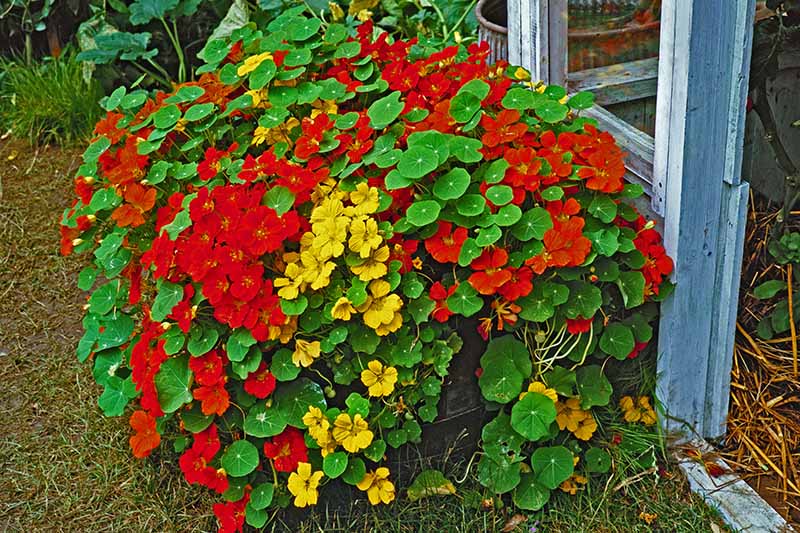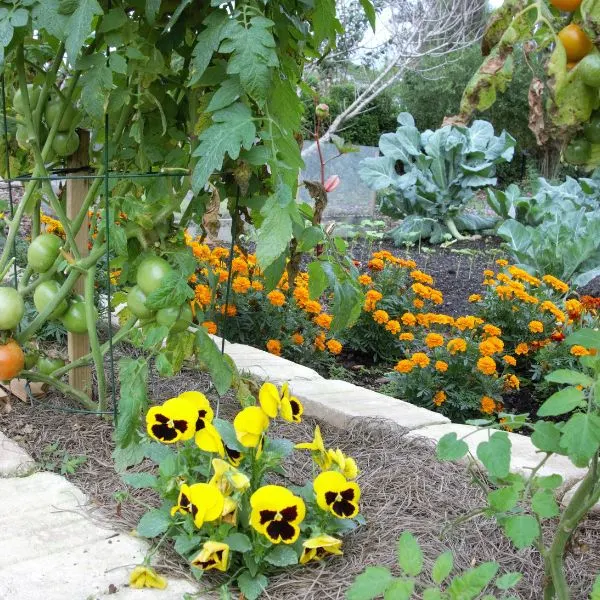The Ultimate Guide To Red Currant Companion Planting
The Ultimate Guide to Red Currant Companion Planting
Red currants are a delicious and versatile fruit that can be enjoyed fresh, cooked, or juiced. They are also a relatively easy plant to grow, but they can benefit from companion planting. Companion planting is the practice of planting different plants together that benefit each other in some way. By planting red currants with the right companion plants, you can improve their health, productivity, and pest resistance.
In this guide, we will discuss the best companion plants for red currants. We will also cover the principles of companion planting and how to choose the right plants for your garden.
What are Companion Plants?
Companion plants are plants that are beneficial to each other when grown together. They can improve each other's health, productivity, or pest resistance. There are many different principles of companion planting, but some of the most common include:
- Attracting beneficial insects: Some plants attract beneficial insects, such as ladybugs and lacewings, which help to control pests. For example, marigolds are a good companion plant for red currants because they attract ladybugs, which help to control aphids.
- Repelling pests: Some plants repel pests. For example, mint is a good companion plant for red currants because it repels aphids.
- Providing nutrients: Some plants fix nitrogen in the soil, which can benefit other plants. For example, legumes, such as peas and beans, are good companion plants for red currants because they fix nitrogen in the soil.
- Distracting pests: Some plants can distract pests away from other plants. For example, nasturtiums are a good companion plant for red currants because they attract pests, such as aphids, away from the red currants.
How to Choose Companion Plants for Red Currants
When choosing companion plants for red currants, it is important to consider the needs of the red currants and the companion plants. Red currants need full sun and well-drained soil. They are also susceptible to a number of pests, such as aphids and spider mites.
Some good companion plants for red currants include:
- Marigolds: Marigolds attract ladybugs, which help to control aphids. They also repel nematodes, which can damage red currant roots.
- Nasturtiums: Nasturtiums attract pests, such as aphids, away from red currants. They also help to suppress weeds.
- Chamomile: Chamomile repels aphids and spider mites. It also helps to improve the flavor of red currants.
- Yarrow: Yarrow repels aphids and spider mites. It also helps to improve the drainage of the soil around red currants.
- Potatoes: Potatoes fix nitrogen in the soil, which can benefit red currants. They also help to suppress weeds.
Conclusion
By planting red currants with the right companion plants, you can improve their health, productivity, and pest resistance. By following the principles of companion planting, you can create a balanced and healthy garden that will thrive for years to come.
Red currants are a delicious and versatile fruit that can be enjoyed in a variety of ways. But did you know that companion planting can help to improve the health and productivity of your red currant bushes?
Companion planting is the practice of planting certain plants together in order to promote beneficial interactions between them. For red currants, some good companion plants include:
- Marigolds: Marigolds help to repel pests and attract beneficial insects, both of which can help to keep your red currant bushes healthy.
- Nasturtiums: Nasturtiums also help to repel pests and can improve the soil quality around your red currant bushes.
- Chamomile: Chamomile helps to deter nematodes, which are harmful pests that can damage red currant roots.
- Chives: Chives release sulfur compounds that help to repel pests and diseases.
- Garlic: Garlic is another good pest-repelling plant that can be grown near red currant bushes.
If you're looking for more information about red currant companion plants, I recommend visiting Gardenia Inspiration. This website has a wealth of information on the topic, including a list of recommended companion plants, tips on how to plant them, and information on the benefits of companion planting.
FAQ of red currant companion plants
- What are good companion plants for red currants?
Some good companion plants for red currants include:
- Allium (chives, garlic, onions, leeks): These plants help to repel pests such as aphids and spider mites.
- Brassicas (cabbage, broccoli, cauliflower, kale): These plants help to attract beneficial insects such as ladybugs and lacewings, which prey on pests.
- Legumes (peas, beans, lentils): These plants help to fix nitrogen in the soil, which can benefit the growth of red currants.
- Marigolds: These flowers help to repel nematodes, which are soil-dwelling pests that can damage red currant roots.
- Nasturtiums: These flowers help to attract beneficial insects such as hoverflies and bees, which pollinate red currant flowers.
- What are bad companion plants for red currants?
Some bad companion plants for red currants include:
- Potatoes: Potatoes can attract the same pests as red currants, such as aphids and spider mites.
- Spinach: Spinach can compete with red currants for nutrients and water.
- Tomatoes: Tomatoes can attract the same pests as red currants, such as whiteflies and nematodes.
- Cucumbers: Cucumbers can spread powdery mildew, a fungal disease that can damage red currants.
- Squash: Squash can spread vine borers, a pest that can damage red currant stems.
- When should I plant companion plants with my red currants?
You can plant companion plants with your red currants at the same time you plant the red currants. This will give the companion plants enough time to establish themselves before the red currants start to grow.
- How far apart should I plant companion plants with my red currants?
The distance you plant companion plants with your red currants will depend on the size of the companion plants. For example, you should plant large companion plants, such as allium and brassicas, at least 3 feet away from your red currants. You can plant smaller companion plants, such as nasturtiums and marigolds, closer to your red currants.
- How do I care for companion plants with my red currants?
The care you need to give companion plants with your red currants will depend on the type of companion plants you are growing. However, in general, you should water companion plants regularly, especially during hot, dry weather. You should also fertilize companion plants every few months with a balanced fertilizer.
Image of red currant companion plants
5 different images of red currant companion plants from Pinterest:
- Nasturtiums are a great companion plant for red currants because they attract beneficial insects that help to control pests. They also help to suppress weeds and improve the soil quality.

- Marigolds are another good companion plant for red currants. They help to repel pests such as aphids and spider mites. They also help to improve the drainage around the red currant bush.

- Chives are a good companion plant for red currants because they help to repel aphids and other pests. They also help to improve the flavor of the red currants.

- Potatoes are a good companion plant for red currants because they help to suppress weeds and improve the soil quality. They also help to deter pests such as cabbage loopers and Colorado potato beetles.

- Peas are a good companion plant for red currants because they help to fix nitrogen in the soil. This helps to provide the red currant bush with the nutrients it needs to grow and produce fruit.

Post a Comment for "The Ultimate Guide To Red Currant Companion Planting"